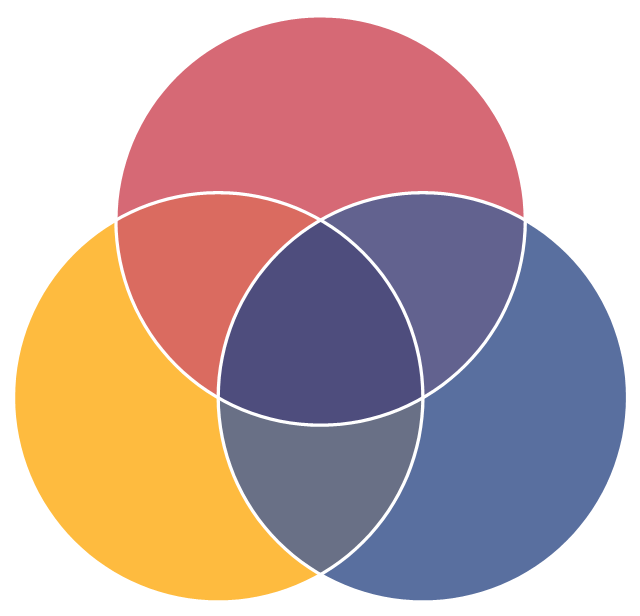 I recently had the privilege be interviewed by Michael Port on his podcast, Steal the Show, where we discussed creating contextual models and the ah-mazing impact it has to drive home your message to your audience and listeners. Please, be my guest and read along as I share the power of contextual modeling and how it can benefit you, your message and your listeners.
I recently had the privilege be interviewed by Michael Port on his podcast, Steal the Show, where we discussed creating contextual models and the ah-mazing impact it has to drive home your message to your audience and listeners. Please, be my guest and read along as I share the power of contextual modeling and how it can benefit you, your message and your listeners.
The Strategy of Creating Contextual Models
So what is contextual modeling, and why is it important not just for speakers, but for executives, or sales people, or anybody else that’s trying to get other people to understand what they have to offer, consume what they have to offer, and then say yes to it?
Contextual models are illustrations that sell your intellectual property, whether you’re internal thought leader or an external. You might be an internal thought leader, the go-to person in your company, as the expert. That’s really important to understand. If you’re known as expert in your field of leadership, as a speaker, author, trainer, consultant, and want the world to see and understand what information you have to share, contextual models will set you apart.
As a professional speaker myself, I believe every speaker needs a unique contextual model. It’s a snapshot of your intellectual property in a way that only you can explain. Now, think about big accounting firms. They all have their own versions of contextual models, and in really good ones, they’re the only people who can actually explain it to you, but what’s powerful about contextual models is it can be the basis of a book. It can be a slide in your keynote. It can be … You can have several contextual models that spin off one, but here’s the deal.
A contextual model is really just a square, a circle, or a triangle. Sometimes you smoosh them together, and stick some arrows on them, but that’s it, honey! It’s really …I think we over-complicate it, but you know yourself, that when you look through history … Think of the late Stephen Covey. First Things First, you know? He had the urgent versus important quadrant model. In the food industry, we have the food pyramid, whether you believe it or not is irrelevant. What people have smartly done is they’ve taken the complex, they’ve made it simple, and then put it in a contextual model. So that’s what contextual models are.
Why Creating Contextual Models are Necessary
If you want to make more money, contextual models will rock your practice. It just will, because it stands you out. There’s a bazillion speakers on leadership, time management, it doesn’t matter, pick a topic. But if you are the speaker that has the contextual model, you show that you have depth of intellectual property. It shows you’ve researched it, so that’s one of the reasons why.
Often times, there isn’t a huge difference between the people that are perceived as novices, and the people that are perceived as experts. The difference is typically only the ability to create contextual models. Those people are perceived as experts in part because they’re so good at organizing their information. Perhaps all of your intellectual property is in your head, and you know what others desire to learn, but haven’t figured out how to put it down either on paper and translate it to an audience in person.
Since people learn in a variety of ways, it’s important to provide context that helps visual learner embrace the information more easily, and your audible learners connect an image to what they’re hearing. Models are also great for summarizing a great deal of information into a few bite-size images allowing the reader and listener to dive deeper into the content they feel is most relevant to them.
Begin Visualizing Words in Contextual Models
Let me let you in on a secret. I think in models. I know that’s really like freaky, and I know I sound like I’m five, but I seriously, I think in models. So when you start talking to me, I’m already visualizing what that would look like. When you think about a contextual model, I referenced before that they’re really just squares, circles or triangles. Let me just throw some words out, and you tell me what shape comes to mind.
For instance, if I talk about people, what shape comes to mind for you? Most likely you think of the shape of a circle – like a hug, or a cuddle. So that makes sense, right?
If I’m talking about a process, like there’s a hierarchy to something, what kind of shape comes to mind? Most likely steps!
When you think about models, there are certain things that are going to lend themselves towards certain shapes. So whether it’s process, or people, there are certain things that are going to come to mind.
When to Use Contextual Models
I’m all about attention, and if you want to get peoples’ attention quickly, you need a model. People don’t have time anymore. They don’t have time to read through your blog, so give them a model. They’re like, “Oh, I’ve got it.” Now if they love your model, they’ll read further. So when I use models in my keynotes, sometimes it’s a slide, but often I’ll draw the model with my body. You can get really good at this.
You can know your intellectual property so well, that I have a Venn diagram that is the basis of my book called, Folding Time, it’s one of my keynotes. So on the stage, I draw the model with my hands and my body, and the audience is like, “Oh my god!” And I’m saying, “Guess what? It’s on page 27.” So people love that, but people who are visual can see me do it, and people who want to see it in a book can then do it.
Keep Models Visually Leading
Now, here’s another mojo trick. If you want your model to have mojo, you also want to give it movement. Movement is basically arrows. That’s the fancy way to do it. So if when you think about a process, and the process leads to the top, the arrows would point up. If you have a circular … One of my Folding Time models in my book, it’s a Venn diagram in the middle, but there’s arrows on the outside which indicate bigger things, and they keep moving so anyone who’s looking at it goes, “Oh, this is not complete, they keep moving.”
So you’ve got to think about with your models, if you want to give it some mojo, make it even sexier, another layer to it is give it movement. Does it go up? Does it go sideways? Does it go down?
For instance, when I created the sales process for Virgin, we created a sales cycle but it never actually closed the loop. Because we’re always selling, right? Just because a customer comes into the store, and maybe they want a cellphone from Virgin, but they also might need a safety plan because they’re going to drop their cellphone. When you think about sales, it doesn’t stop because we’ve reached the transaction at the end, where the customer or the client has bought the product. When I create sales models for clients, if I do that level of consulting, it’s then about keeping it as an open loop, because you don’t actually ever close the sale, you just open the relationship.
So think about the power of arrows, and where the arrowhead even goes, that elevates your IP again. I mean, there’s so many layers to models, I get super excited about models.
change, it’s often a slight two millimeter difference, and he brought that up because I gave him an example of doing a voiceover without a smile, and doing a voiceover with a smile, because we were talking about the different voices you use for a negotiation.
So first, consider a shape that comes to mind first. What’s the shape that comes to mind around your intellectual property? Is it a process model? Is it a value model? Then, consider what kind of keywords or phrases do you use? Is there movement you can have for mojo? And then all of a sudden you start creating your model.
Models give leaders tools to be able to communicate more powerfully, and that’s another thing. If you’re a speaker listening to this, or a consultant, your model makes it easier for your clients to buy you. It makes it easier for them to justify the investment they’re making in you. Just as a heads up, every time that I add a model to a proposal, generally speaking, I close about 98% of those deals, because no one else puts their models in their proposals, but what a client can see is there’s depth.
Get Started Creating Contextual Models
Are you ready to create a contextual model to help support your information and create an impactful learning tool for your listeners?
Start, first, by looking for models that inspire you. Start seeing what resonates with you. Start to look for models and see what resonates with you, and then start thinking through first. What shape comes to mind? When you think about your contextual messages, the biggest messages of your presentation, or your book, or your keynote, or your consulting agreement, what’s the biggest message you wish your audience to hear? And what shape comes to mind?
Go to my website, there’s actually a cheat sheet. So there’s models already created from the thought leadership community that you can just download.
I believe people’s’ attention is the greatest gift, and when people give you their attention, whether they’re reading your blog, or watching a video, or they’re sitting in audience watching a keynote, that’s the greatest thing they can ever give, is their attention. We all have such a limited amount of time, and a limited amount of attention. As a result, it is our responsibility when we have a message to share with the world, is to present it in a contextual model where you get to the point quickly, you really show people you are saving them time by giving them the best, most meaty part of the information they need to know immediately and up front. Do your model early, do it quickly, and your listeners and audience will remember your information better, more effectively and with greater ease and understanding.
Want to learn more how about how to creating contextual models can assist you in delivering your message? Listen to the Michael Port podcast, Steal the Show, in its entirety. Join us here and listen in! For more Michael Port interviews with Neen James, check out: Steal the Show.




I just listened to the podcast Neen, great stuff! I’ve used these models (or frameworks) for my consulting business for many years but only now thought of them as a tool for my speaking platform. Thanks for the inspiration!
Thanks for the feedback, Jed. I’m thrilled to hear it’s helping you in your business. Take care and best wishes!